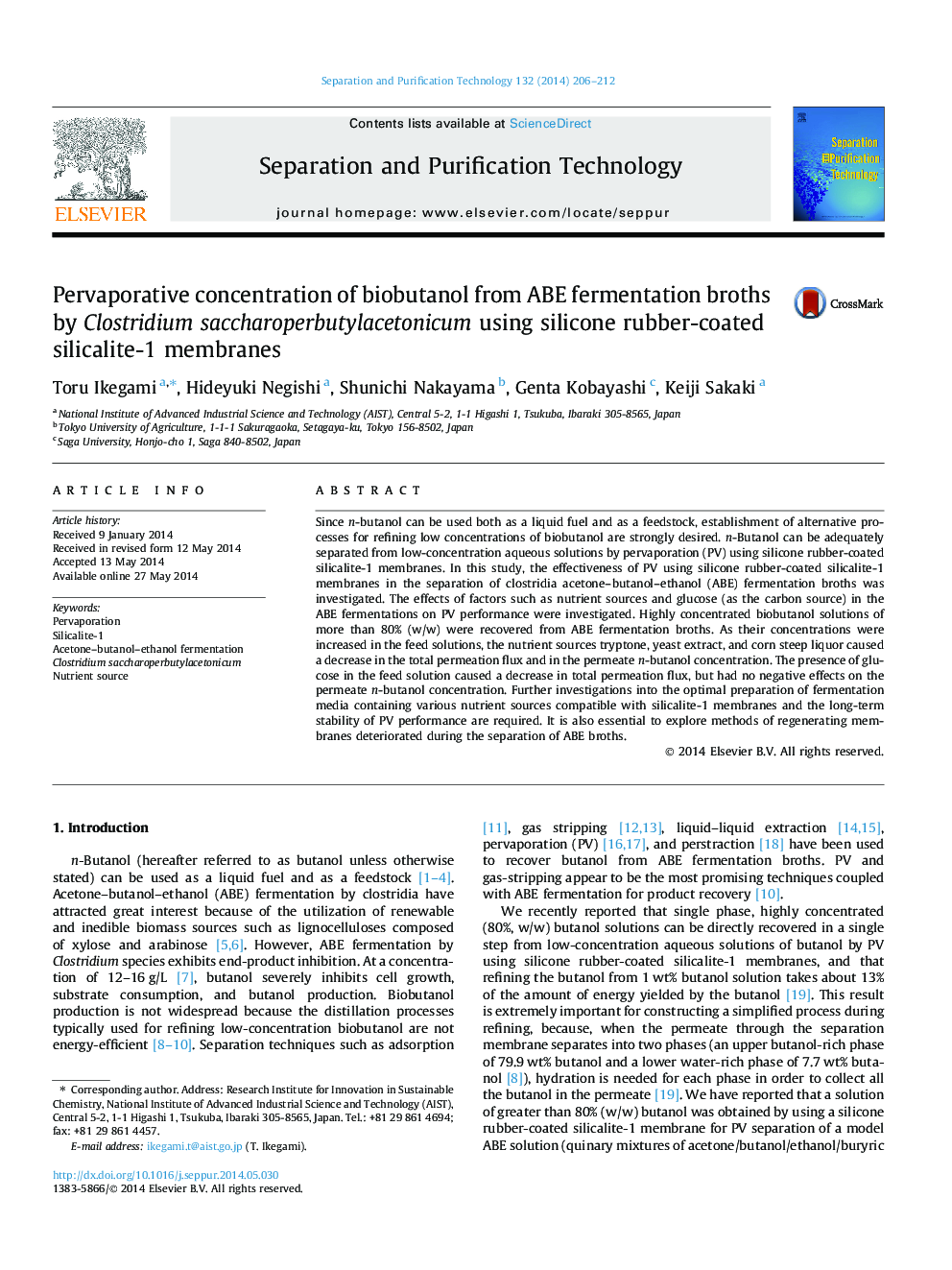| Article ID | Journal | Published Year | Pages | File Type |
|---|---|---|---|---|
| 641011 | Separation and Purification Technology | 2014 | 7 Pages |
•Biobutanol solutions of 80% (w/w) were obtained from broths by pervaporation (PV).•Silicone rubber-coated silicalite membranes are useful for PV of biobutanol.•PV performance greatly varied with composition of nutrient sources in ABE broths.•Tryptone, yeast extract, and corn steep in feed solutions affected PV performance.
Since n-butanol can be used both as a liquid fuel and as a feedstock, establishment of alternative processes for refining low concentrations of biobutanol are strongly desired. n-Butanol can be adequately separated from low-concentration aqueous solutions by pervaporation (PV) using silicone rubber-coated silicalite-1 membranes. In this study, the effectiveness of PV using silicone rubber-coated silicalite-1 membranes in the separation of clostridia acetone–butanol–ethanol (ABE) fermentation broths was investigated. The effects of factors such as nutrient sources and glucose (as the carbon source) in the ABE fermentations on PV performance were investigated. Highly concentrated biobutanol solutions of more than 80% (w/w) were recovered from ABE fermentation broths. As their concentrations were increased in the feed solutions, the nutrient sources tryptone, yeast extract, and corn steep liquor caused a decrease in the total permeation flux and in the permeate n-butanol concentration. The presence of glucose in the feed solution caused a decrease in total permeation flux, but had no negative effects on the permeate n-butanol concentration. Further investigations into the optimal preparation of fermentation media containing various nutrient sources compatible with silicalite-1 membranes and the long-term stability of PV performance are required. It is also essential to explore methods of regenerating membranes deteriorated during the separation of ABE broths.
